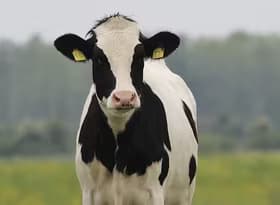Don’t be complacent about agriculture’s ability to rescue us
The massive increase in tourist numbers coming to New Zealand between the Global Financial Crisis and the COVID-19 pandemic is well documented, lifting from under 2.5m in 2008 to 3.9m in 2019. But it’s perhaps less well-known that agriculture and forestry exports held their own during this period, with their share of total exports increasing from 44% to 49%. The drop in “other goods” in Chart 1 implies that the squeeze was felt more by manufactured exports than the primary sector – a trend that is not unique to the last decade.
Since COVID-19 struck, a reliance on agriculture has been the defining feature of the best-performing regional economies. Chart 2 shows that Taranaki, Hawke’s Bay, and Gisborne are among the fastest growing regions over the last year, and international visitor spending was a relatively small part of their activity base. The West Coast, Otago, and Auckland all tell the opposite story (although Auckland’s struggles are due to a broader range of factors than just the loss of international tourism).
Nevertheless, the unexpected evaporation of tourism export revenue provides important warnings for other export sectors as well. Overreliance on a single market or export type clearly leaves New Zealand vulnerable to changes in trading conditions. Although COVID-19 was one of the most extreme and arguably unpredictable events in this regard, there are plenty more foreseeable candidates that could disrupt agricultural exports.
- Diplomatic and trade tensions between China and Australia over the last 1-2 years demonstrate how geopolitics can undermine previously strong export outcomes.
- Increased government emphasis on environmental considerations such as water quality and carbon emissions threaten to constrain further growth in agricultural output.
- Technological advancements and changes in dietary habits mean that continued growth in global demand for meat and dairy products is less certain than 15 years ago, with more people open to plant-based alternatives or lab-grown meat.
So although the agriculture sector has been a saving grace for the New Zealand economy throughout the pandemic, it would be foolhardy to expect that it can always play this role. This cautionary note raises questions about how the resilience of the agricultural sector and its role in generating export revenue can be improved.
Echoing the long-term demise of New Zealand’s manufactured exports, the primary sector shows the tension between exports of raw commodities and higher-value products over recent years. For example, much of dairy’s lift from 12.8% to 17.2% of exports between 2008 and 2019 simply consisted of exporting milk powder to China. Similarly, the decline in wood products from 5.2% to 3.5% of exports over the same period was mirrored by a lift in the share of unprocessed forestry exports from 1.4% to 3.0%, as sending logs to China became increasingly commonplace.
The issues faced by the agricultural sector outlined above suggest it would be prudent to try and reverse this trend to make New Zealand’s export base more resilient, as well as facilitating growth in export revenue going forward. But how? Analysis from our Export Market Finder points towards two key concepts that could help.
Firstly, the concept of adjacent products indicates realistic higher-value products that could be focused on given our current export make-up. Sometimes, these adjacent products are obvious: butter or cheese instead of milk powder, for example. Sometimes, they are less obvious: many countries that export shellfish also export a significant volume of fishing nets. Importantly, the concept also helps rule out a product switch that is a step too far, such as shifting from exporting logs to furniture.
Secondly, the concept of untapped potential identifies markets for specific products where New Zealand has a realistic opportunity to grow its exports. This concept can be applied to both existing export products and potential new higher-value products that could be pursued.
Some high-level examples are shown in Chart 3. Taken together, butter and cheese offer as much as $3.9b of potential growth from the $4.8b of exports recorded over the last year, a shift that would reverse much of the extraordinary growth in milk powder exports since 2008. Similarly, the growth in log exports over the last 13 years could be swallowed up by the $5.5b of export potential across several more highly processed wood products such as sawn timber or veneers. Even fruit lends itself towards more processing (although it is debatable whether some of these products are higher-value, given the premium that can be commanded by fresh fruit).
Pursuing these changes won’t necessarily be easy – they require investment across a range of facets including plant and equipment, human capital, and the development of new markets and trading relationships. But the alternative of complacently continuing to do what we’ve always done, chasing the easy cash now, could easily come back to bite New Zealand in the future. If that occurs, agriculture’s cushioning of the fall in exports during 2020 will seem like a distant memory.
This opinion piece was published on Stuff on 1 October 2021.










